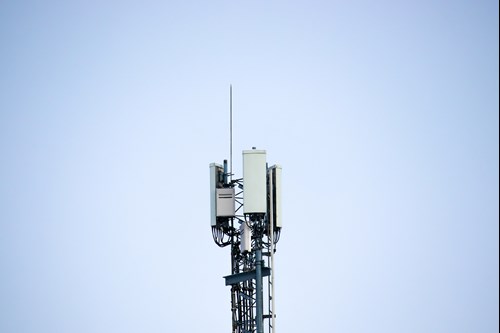5G myths – busted!
From factually incorrect stories that claim 5G exposes people to harmful levels of radiation, to rumours that link the mobile internet technology to the spread of Covid-19, there are many myths about 5G. In this blog, we separate fact from fiction, busting the myths commonly associated with 5G.
The myth: 5G caused Covid-19
One of the many conspiracy theories about Covid-19 was that it was caused by 5G. There were rumours that people’s immune systems were weakened by 5G-emitted radiation, leaving them susceptible to falling ill with the virus. These claims have been disputed by credible sources from all over the world, including the World Health Organization and the UK government.
The simple reasoning is this: viruses cannot travel on radio waves or mobile networks. Therefore, it is biologically impossible for 5G to cause or spread Covid-19. In addition, the virus has spread in places where a 5G network hasn’t been rolled out yet.

The myth: 5G causes cancer
One of the biggest concerns around 5G is that it exposes people to harmful levels of radiation, which can cause cancer.
It’s true that 5G is broadcast via radio waves, which are a form of radiation. However, this type of radiation is known as ‘non-ionising’ and doesn’t carry enough energy to directly damage cells. Non-ionising radiation is different to ‘ionising’ radiation – for example, gamma (nuclear) rays and X-rays – which can damage cells and is therefore linked to cancer.
Most radiation is harmless, though. It’s simply the release of energy – and we encounter it every day, from sunlight, to microwaves and some light bulbs at home. Even our own bodies release radiation.
The level of radiation released by 5G is well within the non-ionising part of the spectrum. In fact, visible light (the light from your TV or light bulb) operates at a frequency 100,000 times higher than 5G – and this is still classed as non-ionising!
Read more about what is linked to cancer by visiting Cancer Research UK’s website.

The myth: 5G masts are a health risk
5G masts have been vandalised by people who believe they are dangerous and pose a risk to human health.
However, 5G masts have been built within strict safety guidelines to ensure that people aren’t exposed to unsafe levels of radio waves. Ofcom, the UK’s telecoms regulator, has carried out tests at 5G-enabled mobile masts across the country and found that they were well within the strict safety guidelines that monitor radiation levels.
5G masts are also able to operate at lower levels than their 4G counterparts as there is more of them – so the radio waves they release are many times lower than the guidelines.

The myth: 5G is bad for the environment
Another concern about 5G is that it is bad for the environment. In truth, 5G actually has the potential to reduce our carbon footprint and play a big part in the fight against climate change.
To start with, 5G has been designed to use less power than previous generations of mobile technology – including 4G. Reports show that 5G masts already consume half the energy as their 4G counterparts per gigabyte, and it's expected that they'll consume even less in the future.
In addition, 5G base stations have the capability to go into ‘sleep mode’ when there are no active users in range – something which isn’t available with 4G networks. There are claims that this can reduce base energy usage by 40%, which will in turn reduce carbon emissions.
5G connectivity can also be used to make industries more efficient and will play a significant role in the US meeting its climate change goals, according to a study by Accenture published in January 2022. In addition, analysis by Ericsson in 2021 said 5G’s potential carbon emission savings in the EU were the equivalent of taking more than 35 million cars off the EU’s roads.
Both studies suggest that implementing 5G within power, transport, manufacturing and buildings sectors – which currently have high carbon emissions – could have significant benefits on the environment. The examples of how this will be possible include: reduced traffic congestion, more people using public transport, predictive maintenance within manufacturing, and increased green energy use.

Be 5G Smart
We hope this blog has helped to bust those myths you’ve heard about 5G and show you how it has the potential to make our future a smarter, cleaner, healthier, more economical one. We invite you to ‘Be 5G Smart’ and find out more about what this latest generation of mobile technology could do for you.
